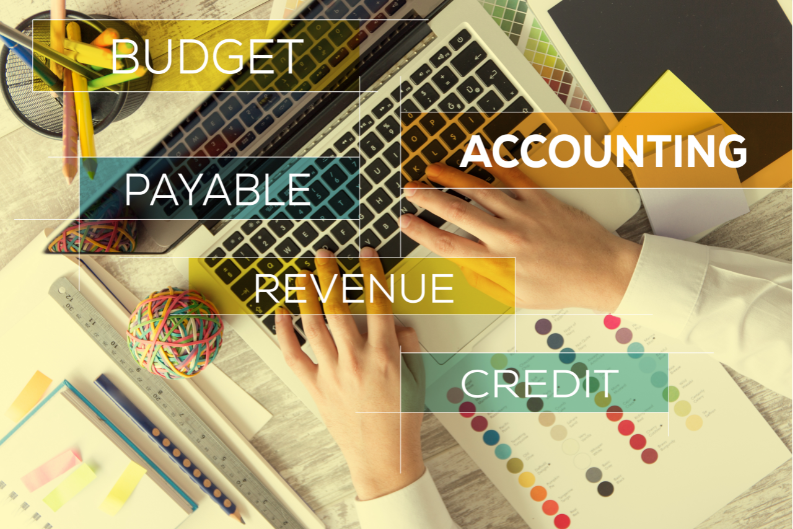List of Short-Term Courses in Computer Skills for Beginners

Many people find computers hard. They want to learn, but don’t know where to start. Good news! Basic computer courses can help everyone. From young students to retirees, learning computer skills is key today. One fact stands out: starting with the basics like Microsoft Office or internet browsers opens many doors. This blog will show short courses that make you good at computers fast. You’ll see how to pick the right course for your goals. Get ready for a computer skills boost! Essential Computer Skills Courses Starting with computer basics is the key. These courses cover how to use a personal computer, manage files, and understand software like Microsoft Office. They lay the foundation for all other learning in computing. Introduction to Computers and Office Productivity Software This top course, “Introduction to Computers and Office Productivity Software,” comes from The Hong Kong University of Science and Technology. It’s for anyone who wants to learn about computers, Microsoft Word, and spreadsheet programs like MS Excel. You’ll also get into internet explorer and web browsing. The course lasts between 1 to 1.5 months. You can find this online at places like Udemy, CDAC, Kore InfoTech, and it’s featured on Coursera too. Perfect for beginners wanting computer skills for work from home jobs or just to know more about operating systems like Windows 10. This course covers the basics of using a computer, how software applications work together with hardware, and how to use office applications efficiently. Basics of Computer Hardware and Software Learning about computer parts and programs is like getting to know the brain and heart of your PC or Mac. The University of California, Irvine offers a top-notch class on this topic. It shows students how to handle their own computer fixes and figure out problems without needing help. Think of it as being able to fix a flat tire instead of calling for a tow truck. The course costs between 3,000 and 35,000 INR. Once you finish it, you get a certificate showing what you learned. You’ll know how the pieces inside your computer work together and use software that lets you do all sorts of tasks. This knowledge can open new doors for jobs because companies always need people who are good with computers. Plus, you’ll feel more confident using different types of software for projects or fixing hardware issues yourself. Programming and Software Development Courses If you want to make things with computers, programming and software development courses are a good start. They teach you how to write instructions that computers follow. Learn to Program: The Fundamentals Learn to Program: The Fundamentals” is a top online course by the University of Toronto. It shows beginners how to write code. Students learn important programming skills. They start with basics and move to more complex ideas. This course is on Coursera, a big learning site. The University of Toronto made this course for people who want to understand programming from the start. You pay between 3,000 and 35,000 INR for certification courses like this one. After finishing, students know how to use computer languages better. This helps in many jobs today. Computer Science: Programming with a Purpose This top course from Princeton University makes learning computer science easy. It’s on Coursera and attracts many learners. The class teaches you to solve real problems using code. You’ll learn how to think like a programmer. This skill is key for making software or websites. The course covers basic HTML, which stands for Hypertext Markup Language. HTML is what creates web pages on the internet. You also get into more complex topics but in simple ways. By the end, you will know how to use computer programming in daily tasks or even for a job change. Plus, this fits anyone looking forward to becoming proficient with computers, not just experts hoping to enhance their skills in digital marketing or web development. Building and Understanding Computers Building and understanding computers opens a door to the inner workings of modern tech. It takes you through assembling a device piece by piece and explains how each part plays its role in making the system work. Build a Modern Computer from First Principles: From Nand to Tetris This course takes you on a unique journey. You start with something simple, the Nand gate, and end up creating your own computer. It’s like playing with LEGO blocks, but for grown-ups interested in technology. The Hebrew University of Jerusalem offers this top course on Coursera. People who take it learn how computers work inside out—from nothing to a fully working machine. The cost ranges from 3,000 to 35,000 INR for those looking to get certified. For anyone eager to understand the core of computing or build one from scratch using principles and tools discussed in class, this is perfect. Plus, knowing these skills can make your resume stand out to recruiters and enhance your proficiency with computer systems overall. Udemy and Shaw Academy are also places where you can find this learning adventure waiting for you. How Computers Work “Understanding the Mechanics of Computers” is an acclaimed course offered by the University of London, prominently showcased on Coursera. This course imparts knowledge about the integral components of computers. You’ll gain insight into hardware, examples being the mouse and file system, as well as software, including prominent operating systems such as Windows OS and Macintosh Computers. The intent is to increase your computer literacy. Students delve into matters like the interplay between Microsoft Windows and Apple devices. They scrutinize Google Chrome and the mechanics of web browsing. The course also elucidates shortcuts in Microsoft Excel and PowerPoint aimed at enhancing work efficiency. These skills are fundamental for individuals desiring a deeper comprehension of computers. Networking and Security Courses In networking and security courses, you learn how to protect data and manage networks. These classes teach skills like setting up firewalls and keeping information safe from hackers.
How to Use Visual Basic for Excel Automation

Do you ever find yourself doing the same tasks over and over in Excel? Maybe you’re making reports or sorting data. This can get boring and take a lot of time. VBA, which stands for Visual Basic for Applications, is here to help with this problem. It’s a programming language made by Microsoft. One cool thing about VBA is that it lets you automate those repetitive tasks in Office apps like Excel. Our article will show you how to start using Visual Basic for automating your work in Excel. You’ll learn how to make your first macro, handle errors, and even use advanced techniques. Get ready to save time with VBA! Getting Started with VBA in Excel To start using VBA in Excel, first activate the Developer Tab. This tab opens up the Visual Basic Editor, where you can write and run your code. Activating the Developer Tab Activating the Developer Tab in Microsoft Excel lets you access many powerful tools. This is a key first step for using Visual Basic for Applications (VBA) to automate tasks. Open Microsoft Excel on your computer. Click on the FILE tab at the top left corner of your screen. Select “Options” from the menu on the left side. A new window called “Excel Options” will pop up. Look for “Customize Ribbon” on the left panel of this window. You will see two columns in the Customize Ribbon area. On the right column, find “Main Tabs.” Scroll through this list until you find “Developer.” Check the box next to “Developer”. Click OK at the bottom of the Excel Options window. Now, you have activated the Developer Tab in Microsoft Excel. This tab includes tools like “Record Macro,” which lets you start automating tasks with VBA quickly and easily. You can also access more advanced features through this tab as you grow your skills with macros and VBA programming in Excel. Overview of the VBA Editor Interface The VBA Editor is a tool you get to by using the ALT + F11 shortcut or clicking on the Developer tab. This space is where you write and change your code. It has parts like a project window that shows all your work files, and a big area for typing your code. You also find windows for properties where you can see details about what you’re working with. This editor makes it easy to create macros in Excel. You can see your work step by step, use tools to find mistakes, and make your code better before using it in Excel spreadsheets. It’s designed for both new coders and pros who want to automate tasks fast and efficiently. Basics of VBA Programming In VBA programming, you get to control Excel in a way that goes beyond simple spreadsheets. You learn to work with items like text boxes and commands, figuring out how they interact through rules and steps. Understanding the Object Model The object model in VBA is like a tree. At the top, we have the Application object. Think of it as the big boss in Word. Then, we get to the Document object that sits right below it, kind of like its trusted assistant. Inside this document, there are Paragraph objects; these are like workers doing their specific jobs within. This setup helps us talk to Excel through VBA. We start from the top and go down step by step to find what we need. Want to change something in a paragraph? First, chat with Application, then Document, and finally get down to Paragraph. It’s simple once you see how things line up – like picking a path through a forest where each tree is an object waiting for instructions on what to do next. Working with Properties and Methods Working with properties and methods in VBA for Excel lets you control parts of your spreadsheet software with code. For example, the line Application.ActiveSheet.Range(“A1”).Select makes Excel focus on cell A1. This uses the Range object, a basic part of Excel VBA that deals with groups of cells. Properties are like facts about something: they tell you what it looks like or where it is. Methods are actions; they do things like save or select. You can also use Application.ActiveDocument.Save to keep changes in Word documents. This shows how properties and methods work not just in Excel but across different Office applications like MS Word and Outlook. They help automate tasks by setting properties (like which cell to look at) and using methods (to actually look there). It’s about giving commands: “Go here, do this.” And by using loops or if statements, your macros become smarter, doing more work automatically. Creating Your First Macro Starting with macros in Excel opens up a whole new way to automate tasks. First, you use the record function to capture steps, then tweak those steps in the editor for precision work. Recording a Macro Recording a macro in Excel is easy. You can automate tasks with just a few clicks. Here’s how: Open Excel. Click on the “Quick Access Toolbar.” Choose “More Commands” from the menu. Select “Customize Quick Access Toolbar” on the left side. Find the “Choose commands from” drop-down menu. Pick “All Commands.” Scroll down and click on “Record Macro…” Hit the “Add >>” button. Press “OK.” The Record Macro button now shows up in your Quick Access Toolbar. Click on the newly added Record Macro icon. A box pops up asking for details about your macro. Type in a name for your macro, like MACRO1, but don’t use spaces or special symbols. For storage, pick “This Workbook” to use your macro in the current file only. If you want a shortcut, choose a letter under “Shortcut key.” This lets you run your macro with a quick keyboard command. Write what your macro does in the “Description” box if you like – it’s optional! Click “OK” to start recording what you do in Excel. Perform the actions you
The Importance of Microsoft Office Skills in Today’s Job Market

Finding a good job is tough these days. You need many skills to stand out. One key skill set? Knowing Microsoft Office well. This software helps with tasks like writing emails, making charts, and scheduling meetings. Bill Gates introduced Microsoft Office in 1988. Now, it’s everywhere! In this post, we’ll talk about how learning MS Office can boost your chances of getting a job. We promise to keep things clear and simple. Read on if you want to improve your job prospects! Why Microsoft Office Skills are Essential in the Job Market In today’s job market, knowing Microsoft Office suite is key. It shows you can handle various tasks and solve problems using tools like Word for documents, Excel for data, PowerPoint for presentations, Outlook for emails, and more. This know-how boosts your chances of getting a good job and moving up in your career. Enhances productivity across various roles Knowing how to use Microsoft Office boosts work in many jobs. People get more done every day because these tools make tasks faster and easier. For example, someone who writes reports can create them without trouble using Word. Excel helps look at numbers closely and find patterns. This makes important decisions clearer. Teams that work together, even from different places, rely on SharePoint and Teams for sharing ideas quickly. They send messages or files in an instant, keeping everyone up-to-date. Outlook keeps emails and meetings in order, so no one misses out on important info. With these skills, any worker does their job better and faster which is great for any business. Demonstrates adaptability and technical proficiency Being good at Microsoft Office shows you can change as technology does. It means you know how to use tools like MS Word for documents, Excel for data analysis, and PowerPoint for presentations. This skill set is a clear sign to employers that you’re not stuck in old ways of working. You’re ready for new challenges. Getting a Microsoft Office certification makes you stand out. It proves you have the skills needed in today’s job market. You show employers that learning and growing are important to you. This opens doors to more jobs and the chance to move up in your career. Plus, there are many online courses to help improve these skills at any time. Key Microsoft Office Applications and Their Impact Microsoft Office software shapes the way we work today, covering everything from typing up reports to organizing numbers. Word helps you create neat documents, while Excel turns data into easy-to-read charts. Word: Creating professional documents Creating professional documents with Word is key in any job. It lets you make and edit work that looks great. Over 1 million companies around the world use Microsoft Office, including Word. This tool helps you share your ideas in a clear way. You can work from home or anywhere if you have an internet connection. Word makes tasks like writing letters, making reports, and creating flyers simple. With features for checking spelling and grammar, your work looks more polished. Plus, because so many businesses use it, knowing how to use Word can give you an edge when looking for jobs. It’s part of being good with computers today. Excel: Analyzing and visualizing data Excel is great for working with numbers and data. You can manage spreadsheets, which are just like big tables that keep track of everything. With Excel, analyzing data becomes easier. You can look at lots of information and see patterns or trends. This helps in making smart decisions quickly. It also lets you show your data in different ways – like charts or graphs. These visualizations make it simple to explain complex stuff to others. For tasks like financial modeling or looking at sales figures, Excel’s PivotTables help sort things out fast. So, knowing how to use Excel well can really set you apart at work. PowerPoint: Effective presentations PowerPoint helps people make talks that grab attention. It’s great for sharing big ideas in a way that’s easy to understand. You can use pictures, charts, and videos to help tell your story. This makes your message clearer. Using PowerPoint also saves time. With templates and tools, you can put together a sharp-looking presentation quickly. This skill is in demand at many jobs today. Knowing how to make strong presentations can even open up more chances for you to move up in your career. Outlook: Managing communications and schedules Outlook helps people manage emails and plans. It is part of Microsoft 365. This tool lets you access your work from different devices. You can use it on a computer, phone, or tablet. This makes remote work easier. With Outlook, organizing your day is simple. This app improves how fast you can get things done. It keeps track of meetings and messages in one place. You don’t have to switch between apps to check your schedule or email. This saves time and cuts down on stress at work. Advantages of Proficiency in Microsoft Office Having skills in Microsoft Office can open up many job doors and help you climb the career ladder. This set of tools helps you work better, whether you’re putting together a report in Word, making sense of numbers in Excel, or sharing ideas through a PowerPoint presentation. With these skills, you stand out as someone who knows how to tackle tasks efficiently using popular computer programs. So, if you want more chances at jobs and moving up at work, getting good with Microsoft Office is smart. Increased job opportunities Knowing Microsoft Office can really help you get a job. It makes your resume stand out. You show employers you’re good with computers and office tasks. Excel, Word, PowerPoint, and Outlook are skills to highlight. They say you can handle important work like making documents, spreadsheets, presentations, and managing emails. You can even get a Microsoft Office certification to give yourself an edge over others. This shows you



